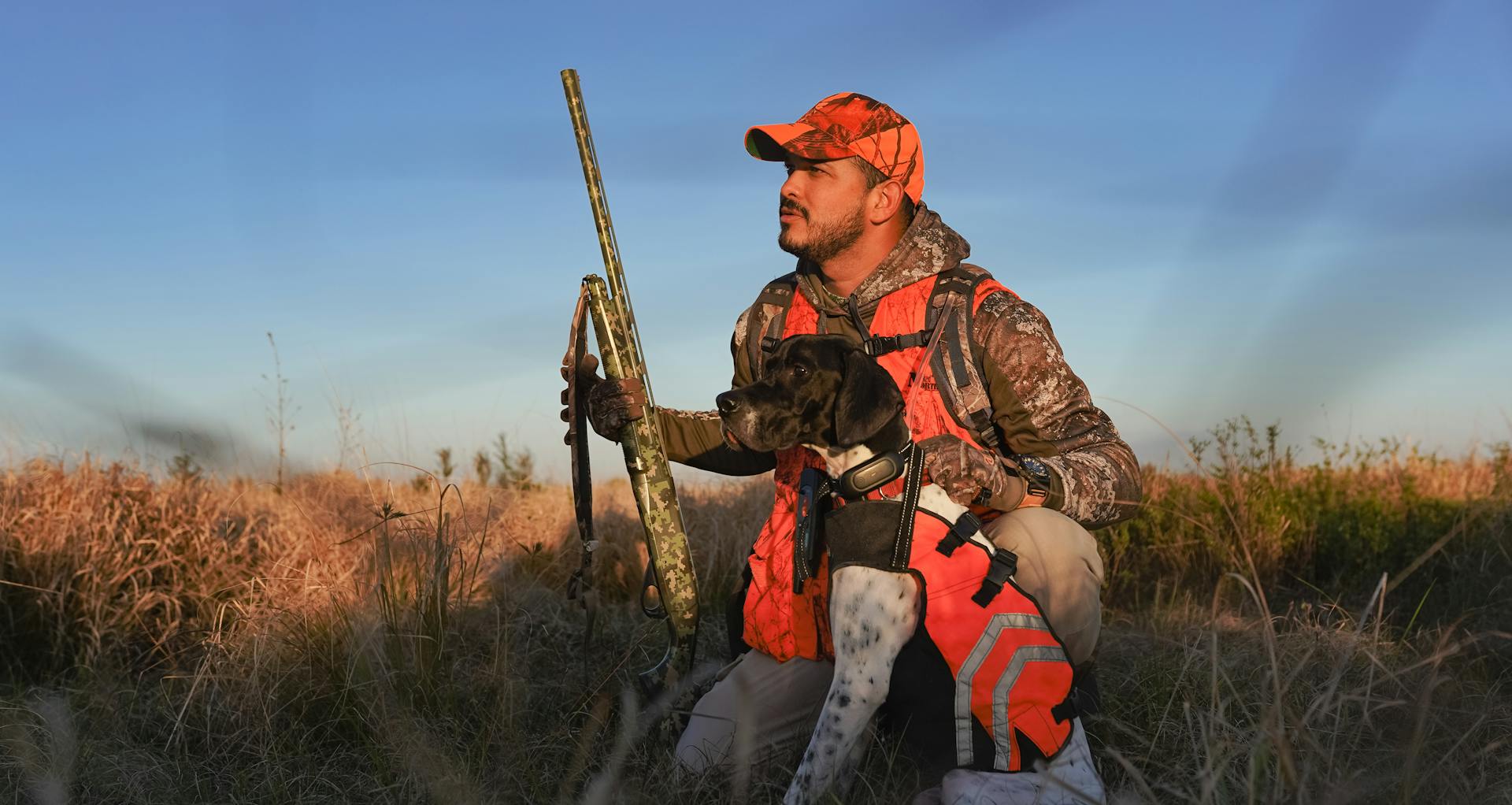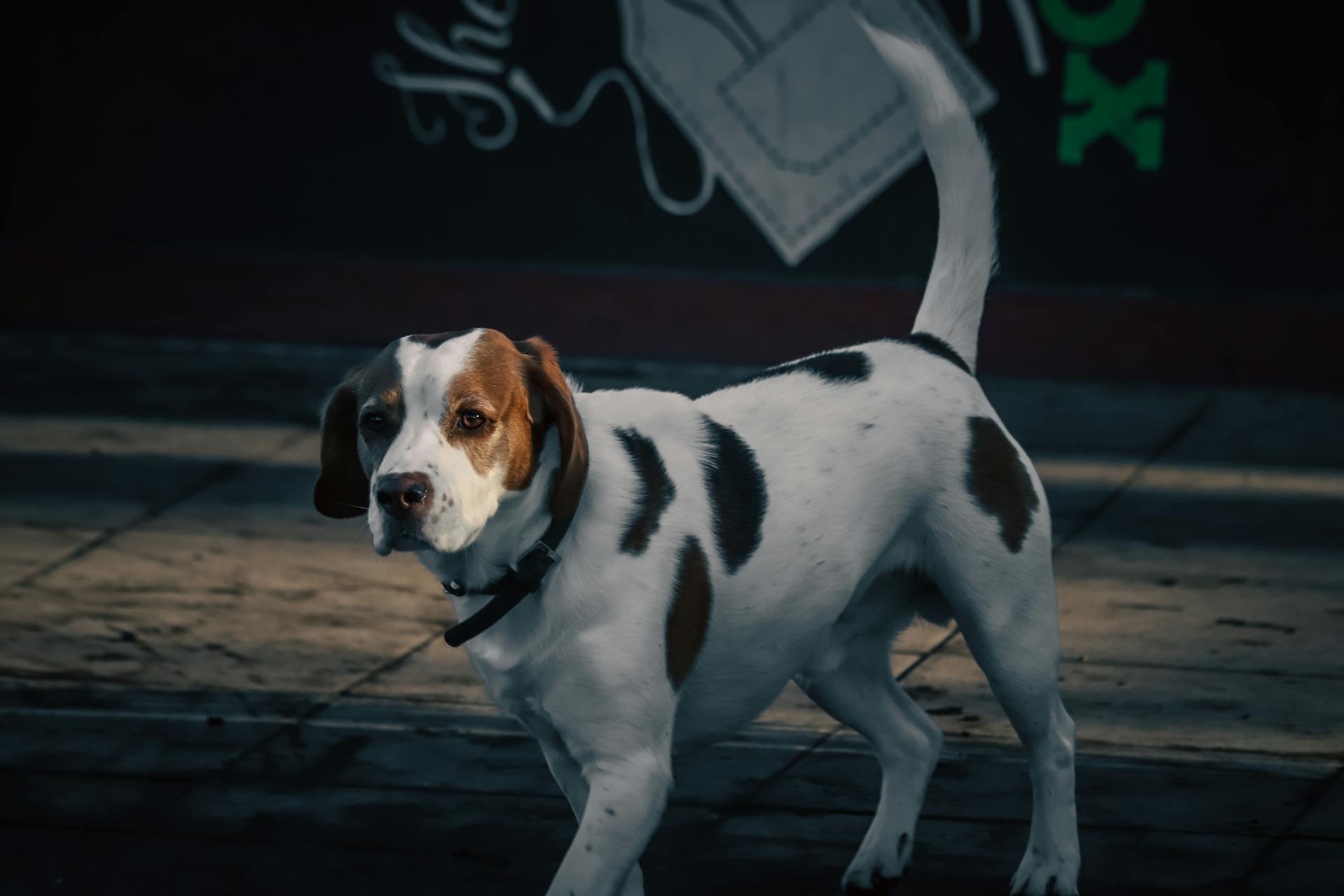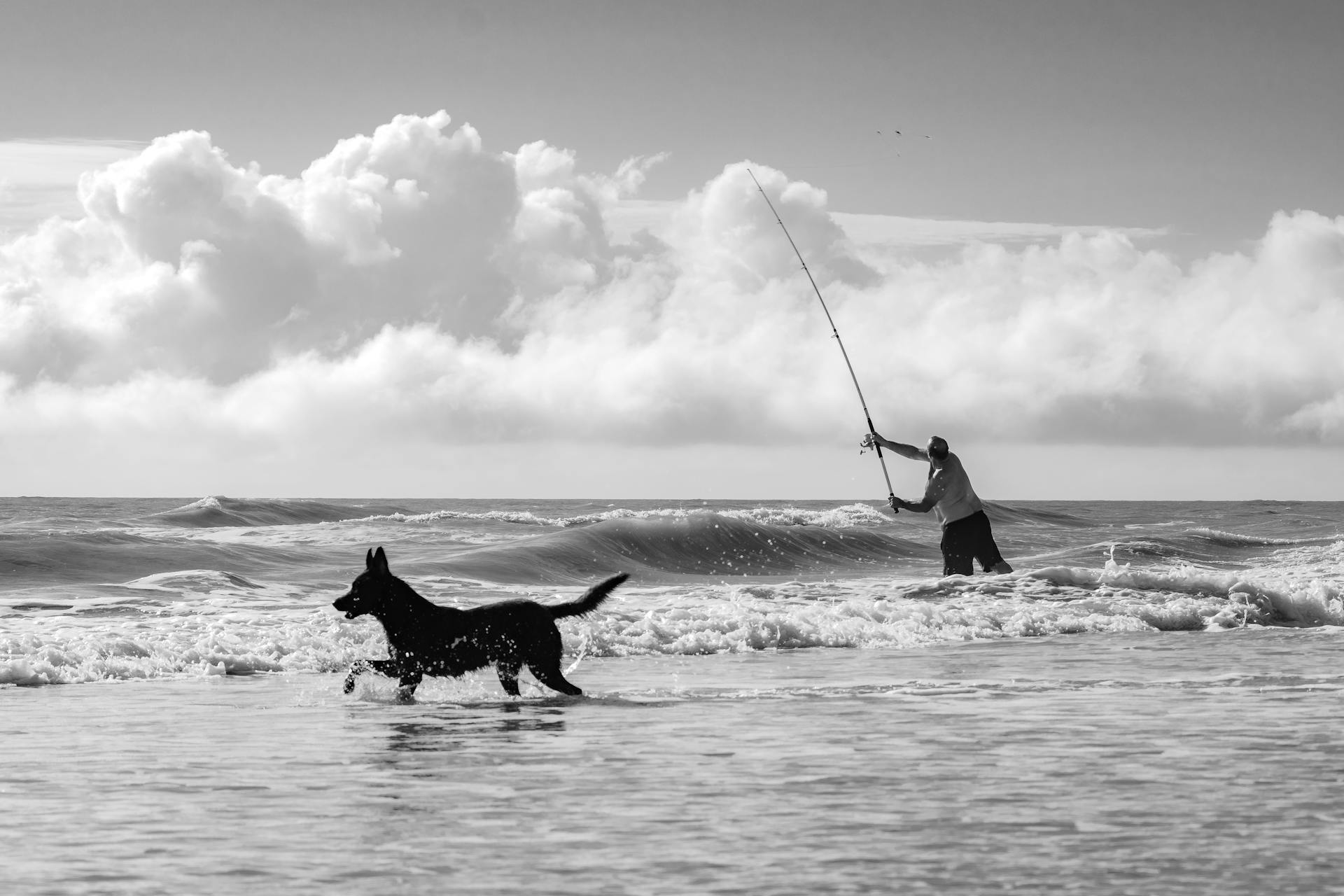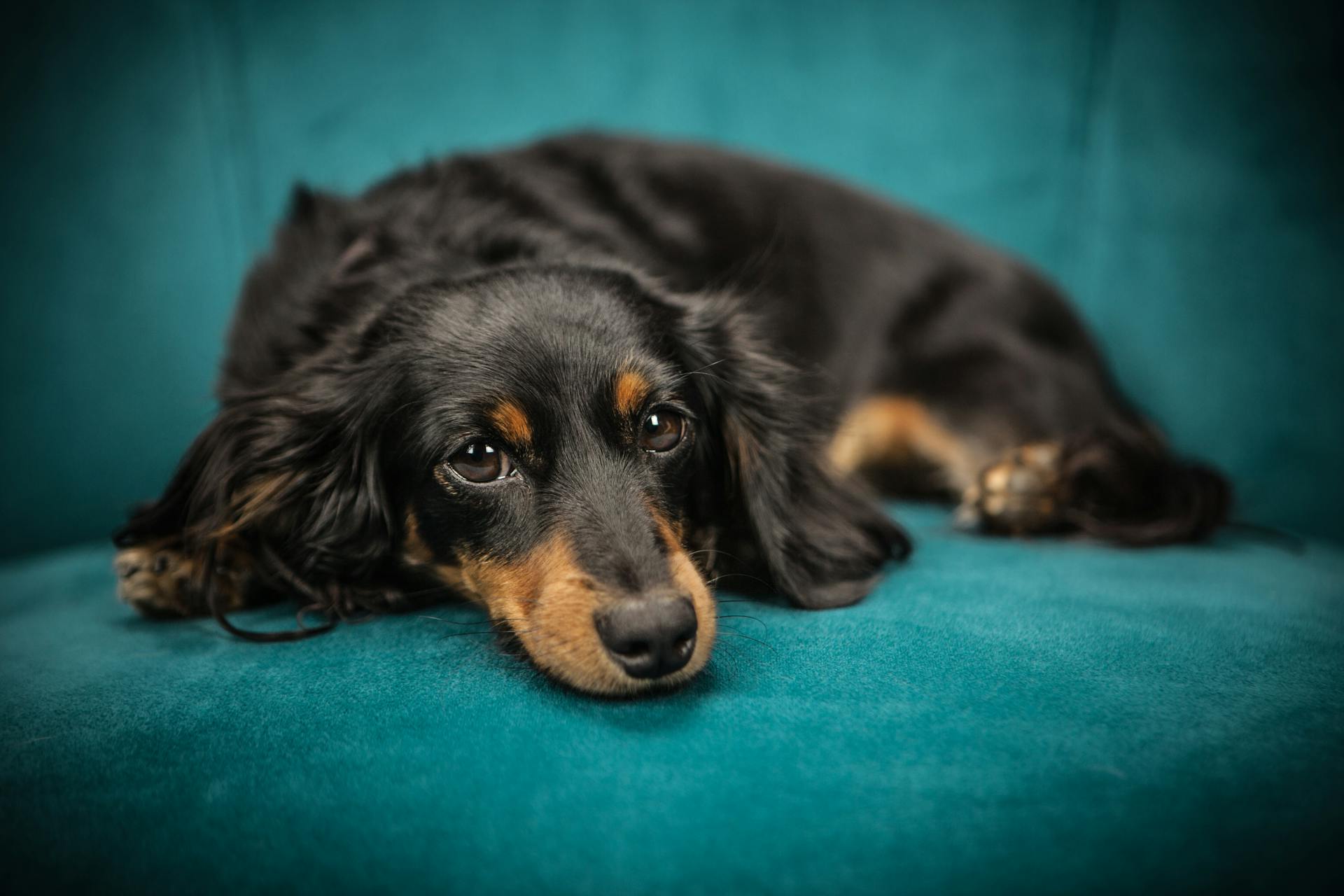
If you're considering bringing a Bluetick Coonhound Mix into your family, it's essential to understand their unique characteristics. These dogs are a cross between a Bluetick Coonhound and another breed, often resulting in a loyal and affectionate companion.
Their size can vary depending on the parent breeds, but they typically weigh between 45-80 pounds and stand between 20-27 inches tall at the shoulder. They're a medium to large-sized dog that requires regular exercise to stay happy and healthy.
Bluetick Coonhound Mixes are known for their short coats, which require minimal grooming. They're a relatively low-maintenance breed when it comes to their coat, but they still need regular nail trimming, ear cleaning, and dental care.
Physical Characteristics
The Bluetick Coonhound mix is a handsome dog with a unique appearance. Their coat is typically dark blue-gray with black spots, creating a mottled effect.
Their ears are low-set and thin, while their eyes are large and round, a dark brown color. The Bluetick Coonhound's tail is high and tapered, carried with confidence.
A key characteristic of the Bluetick Coonhound is its short, coarse, and glossy coat. This helps them excel in the field, making them a skilled hunter and a striking breed.
General Appearance
The Bluetick Coonhound is a compact scenthound with a distinctive appearance. Its dark blue coat is "ticked" with black spots, giving it a unique tri-colored pattern.
The Bluetick Coonhound's ears are low-set and thin, with a silky texture. They're a great example of how a dog's physical traits can be both functional and stylish.
Their eyes are large and round, with a dark brown color that's both alert and expressive. You can't help but be drawn in by their pleading gaze.
Their tail is carried high and tapers to a fine point, adding to their overall athletic appearance. It's a great example of how a dog's physical traits can reflect their breed history and purpose.
Here are some key physical characteristics of the Bluetick Coonhound:
- Dark blue coat with black spots ("ticking")
- Low-set, thin ears
- Large, round dark brown eyes
- High, tapered tail
- Short, coarse, and glossy coat
Overall, the Bluetick Coonhound's physical appearance is a testament to its history as a hunting breed. Its compact, athletic build and distinctive coat pattern make it a striking and memorable dog.
Size
Coonhounds typically weigh between 50 and 70 pounds, with the largest breeds, the bluetick coonhound and black and tan coonhound, weighing up to 80 and 110 pounds, respectively.
Their tall, leggy build helps them travel long distances in pursuit of prey.
Temperament and Behavior
Bluetick Coonhounds are loving, loyal, and affectionate dogs, but they can be wary of strangers.
They are active and smart, but their strong hunting instinct requires monitoring around cats and other small pets.
Proper training and socialization can help mitigate their less-desirable traits, especially when started at a young age.
Bluetick Coonhounds are intelligent and loyal, making them excellent family dogs, especially for families with older children.
They can be a handful to train, getting distracted by interesting scents, but firmness and patience will achieve the result.
They need a strong owner who is the pack leader, and they require space to exercise and preferably a good long walk each day.
Intriguing read: Maltese Mix Dogs
Bluetick Coonhounds are known for their loud, baying cry rather than a bark, which may affect your neighborhood relationships.
Coonhounds are among the most vocal dog breeds, and they're famous for their deep bays, which can be thunderously loud.
They're hunting dogs at heart, so they need a workout, preferably by exploring places with their nose while leashed.
Bluetick Coonhounds have a strong prey drive, which tends to kick into high gear around smaller animals, such as squirrels and other backyard creatures.
They're intelligent and determined canines, often described as "craving a job", which means they enjoy the work.
Training is essential, but you'll never completely train out their desire to chase.
Bluetick Coonhounds may be more challenging to train than other breeds due to their independence and strong hunting instincts.
They need a confident and patient leader who understands their unique needs and can bring out the best in this pup.
Here's an interesting read: Rottie Mix Breeds
Care and Nutrition
Bluetick Coonhound mixes require a high-quality dog food that meets their nutritional needs, whether it's commercially manufactured or homemade with a veterinarian's supervision and approval.
Choose a formula that fits your pup's stage in life, such as puppy, adult, or senior, and make sure it meets the nutritional standards set by the Association of American Feed Control Officials.
A happy, tired Bluetick Coonhound mix will gladly sleep at your feet, so be sure to devote time to training and exercising this pup.
Care
To care for a Bluetick Coonhound, you'll need to devote time to training and exercising this pup.
Their independent and strong-willed nature means they require consistency and positive reinforcement in their training.
A Bluetick Coonhound will reward you with lots of affection if they're happy and tired.
Early socialization is crucial for this breed due to their independent nature.
A happy, tired pup will gladly sleep at your feet, making them great companions.
On a similar theme: Bluetick Coonhound Training
Nutrition
Your Bluetick Coonhound needs high-quality dog food that's age-appropriate, whether you choose commercially manufactured or homemade food with a veterinarian's supervision.
Choose a food that meets the nutritional standards set by the Association of American Feed Control Officials. Look for this statement on the packaging.
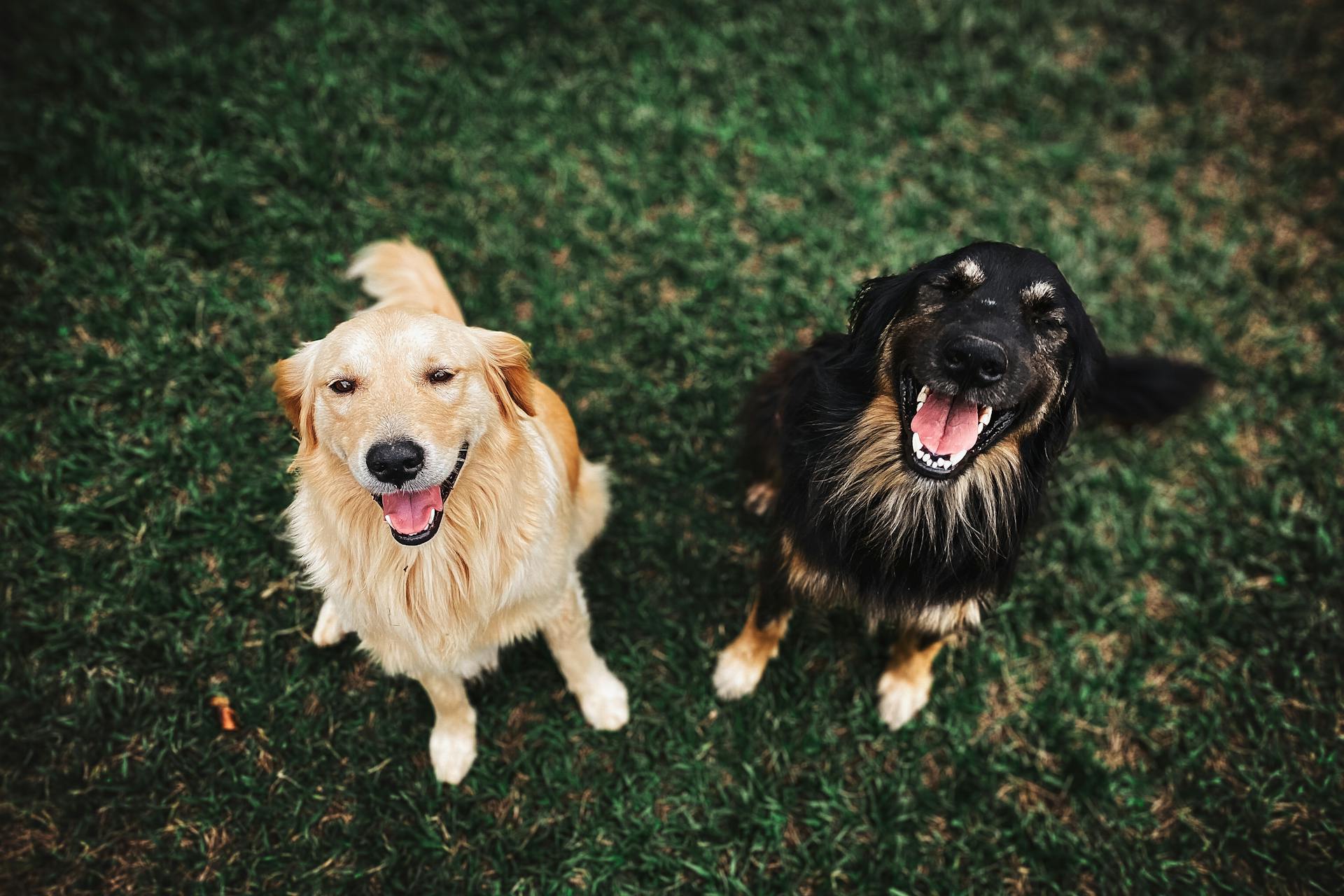
Bluetick Coonhounds are prone to obesity, so it's essential to monitor their food intake and reduce portions if they gain weight.
Your veterinarian can help you develop a meal plan to prevent obesity and maintain your pup's nutritional needs.
Treats should be given sparingly, and people food should be avoided entirely.
Training and Exercise
The Bluetick Coonhound mix is a high-energy breed that requires plenty of daily exercise to stay happy and healthy. They need rigorous daily exercise to prevent negative behaviors and burn off energy.
They're born athletes, excelling at dog sports like agility and tracking, and love to swim. Long walks, hiking, and jogging, at least twice a day, are a must to burn their energy – about 60 to 90 minutes daily will probably do it.
Exercise should always be done in a safe, enclosed area or on a lead, as these dogs have little awareness of roads and other dangers. A GPS tracker attached to their collar may be your best friend (don't tell your Bluetick!).
They can become distracted easily while on walks, so make sure they know what you expect of them and teach them to refocus their attention. Taking them on walks that let them follow their nose (on leash) is an excellent mental exercise for them, too.
Training a Bluetick Coonhound requires consistency, positive reinforcement, and early socialization due to their independent and strong-willed nature. Positive, reward-based training is a must for them, along with varied lessons that hold their attention.
Here are some key exercise needs to keep in mind:
- Exercise your Bluetick in a safe, enclosed area or on a lead.
- They're typically inactive indoors, making them less suited for apartment living.
- Make sure your yard is fenced to protect both your coonhound and other animals.
- Room to run is ideal for these dogs, as they thrive in open spaces with plenty of exercise opportunities.
A calm and confident pet parent who understands the need for patience and consistency is essential for this breed. They're best for people with previous experience with dogs.
Health and Maintenance
The Bluetick Coonhound mix is a relatively low-maintenance breed when it comes to grooming.
They require occasional brushing of their coat to keep it shiny and clean, and a monthly bath or as needed will suffice. Brushing their teeth at least once a week is also essential to prevent dental issues.
Their ears need to be checked often for dirt and debris to prevent infections, and trimming their nails as needed will keep them looking neat.
Here are some common health concerns to watch out for:
Breed Maintenance
Breed Maintenance is a breeze with the Bluetick Coonhound. They require occasional brushing of their coat to keep it shiny and clean, which can be done with a weekly grooming session.
A monthly bath or when needed will suffice, and they're low droolers, but may need an occasional face wipe to save your furniture or clothes. It's essential to check their ears often for dirt and debris to prevent infection.
Regular ear cleaning is crucial, especially after outdoor adventures. Brush their teeth at least once a week, or more often if you can, to maintain good oral hygiene.
Here are some specific tasks to keep in mind:
- Brush your Bluetick Coonhound once a week.
- Bathe them only as needed.
- Check their ears and paws for debris and insects after trips to the woods or exercise in unfamiliar areas.
- Clean their ears at least once a week to prevent infections.
Trimming their nails regularly is also vital to avoid pain while walking or running. You'll know they're getting on the long side when you hear that "clack, clack, clack" on the floor, usually every few weeks.
Health Problems
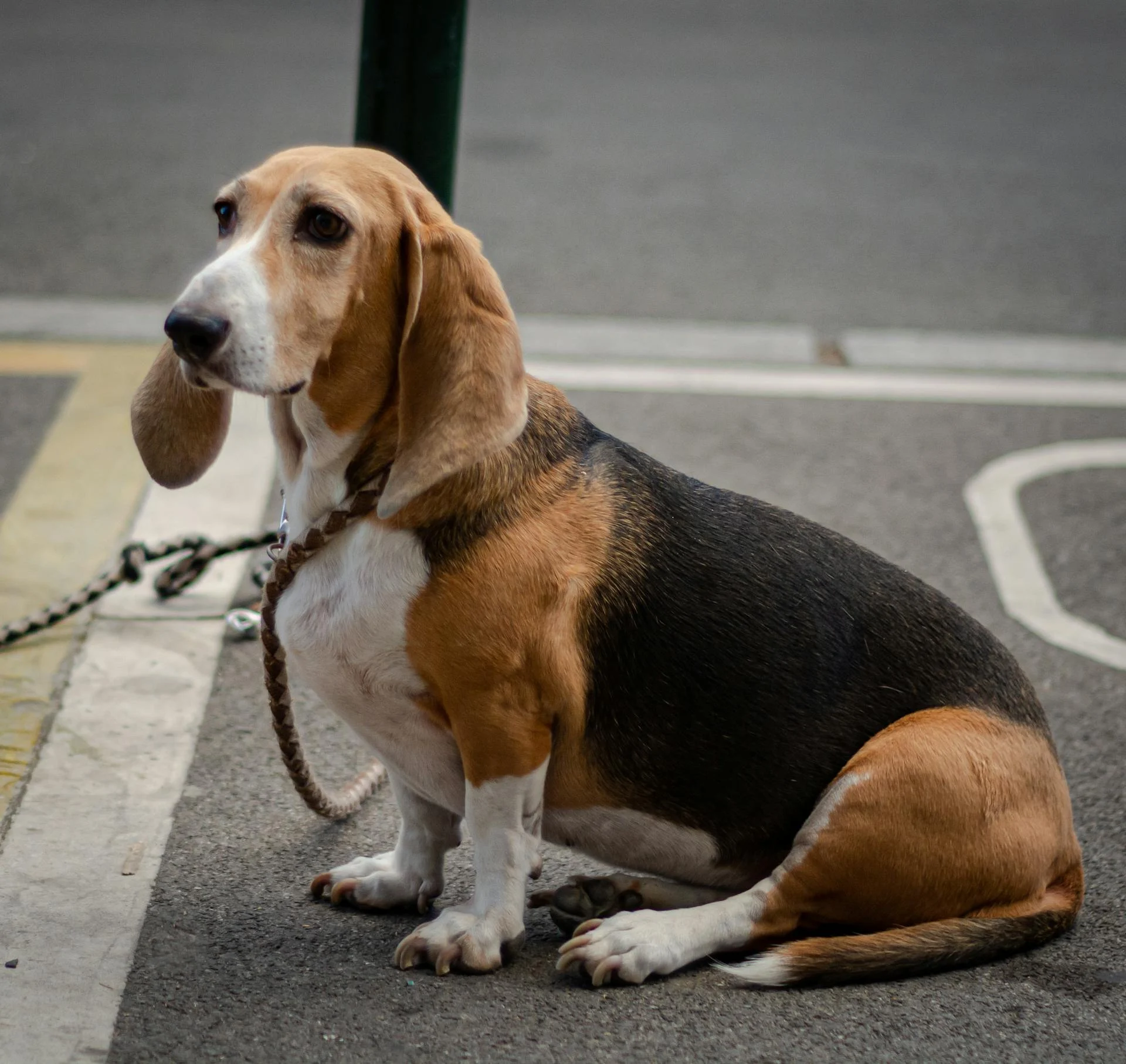
As a responsible dog owner, it's essential to be aware of the potential health problems that can affect your Bluetick Coonhound.
Bluetick Coonhounds are generally healthy, but like all breeds, they can be prone to certain health issues. One such issue is bloat, which can be a fatal condition if left untreated.
Bloat occurs when the stomach twists on itself and fills with gas, causing the dog to retch or dry-heave. If you notice these symptoms, take your pet to an emergency hospital immediately.
Hip dysplasia is another potential health problem that can affect Bluetick Coonhounds. This condition occurs when the joints don't form properly, leading to looseness and pain.
Eye problems, specifically cataracts, can also affect older Blueticks. These cloudy, opaque areas can develop in the eyes and may require surgery.
Bluetick Coonhounds can also be prone to hypothyroidism, a condition where the body doesn't produce enough thyroid hormones. This can lead to dry skin, hair loss, and weight gain.
Here are some potential health problems that can affect Bluetick Coonhounds:
- Bloat
- Hip dysplasia
- Eye problems (cataracts)
- Hypothyroidism
Frequently Asked Questions
Are bluetick Coonhounds good house dogs?
Bluetick Coonhounds are great indoor companions, but they do require regular exercise and a securely fenced yard to prevent wandering off
How big will my Bluetick Coonhound get?
Your Bluetick Coonhound can grow to be 22-27 inches tall and weigh 45-80 pounds, depending on its sex
What two dogs make a Bluetick Coonhound?
The Bluetick Coonhound is a cross between the Grand Bleu de Gascogne hound and the English Foxhound. This unique blend of breeds resulted in a distinctive and versatile hunting companion.
Featured Images: pexels.com
